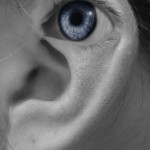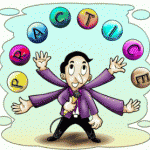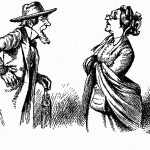 The first thing we are taught about effective communication is to listen. “Listen with feeling;” “Hear what is being said.” But what if we could also see what is being said? Centuries of communication research and observation reveal that impactful, influential communication consists of:
The first thing we are taught about effective communication is to listen. “Listen with feeling;” “Hear what is being said.” But what if we could also see what is being said? Centuries of communication research and observation reveal that impactful, influential communication consists of:
7% WORDS 38% TONE of VOICE
55% GESTURES/BODY LANGUAGE
We spend hours planning what to say, painstakingly choosing words to position ourselves and our products, services or ideas in the most effective way. We spend additional hours analyzing the words of others, attempting to determine the “real meaning.” While words and tone of voice are important, these convey less than half the message.
If we listen with our eyes, what might the gestures or body language we observe be saying?
“I’m happy” Real smiles reach the eyes; false smiles reach the lips only.
“I’m defensive” Arms crossed, face drawn, body rigid and tight, leaning back.
“I disagree” Set jaw, shaking head from side to side, narrowed eyes.
“I’m losing interest” Broken eye contact, slouching, checking watch, changing posture, turning away, sighing.
“You are too close” Body block, physical retreat, swinging or tapping leg, crossing legs away from you, broken eye contact.
“I’m ready to buy” Bites lip, furrows brow, rubs chin, handles contract, scratches head, taps with pen, half closes eyes.
“I’m excited” Increased blinking, leans forward, sits up straighter, restless in chair.
Here’s an exercise to improve your ability to listen with your eyes effectively: mute the sound while watching TV and see how well you can figure out what’s going on.
 Just as important as observing the gestures and body language of others is keeping in mind what yours is communicating about you. Before your next networking event, meeting or sales call, take a few minutes to plan your gestures and body language, too. Here are some DOs and DONTs to remember:
Just as important as observing the gestures and body language of others is keeping in mind what yours is communicating about you. Before your next networking event, meeting or sales call, take a few minutes to plan your gestures and body language, too. Here are some DOs and DONTs to remember:
DO—shake hands and match pressure of the other person; sit in a relaxed position, up and back in chair, or stand straight, move around, gesture; have open arms; maintain friendly eye contact, nod head in agreement, frown thoughtfully, pause before answering question or objection; use forearm or back touch with individuals who are obviously friendly and cooperative.
 DON’T—close your arms in front of you or hide hands in pockets; perch on your chair; jingle coins or doodle, twist ear or stroke chin, tug nose; touch individuals who are obviously direct or analytical; stare at the floor or across the room.
DON’T—close your arms in front of you or hide hands in pockets; perch on your chair; jingle coins or doodle, twist ear or stroke chin, tug nose; touch individuals who are obviously direct or analytical; stare at the floor or across the room.
Get the most out of every conversation: Listen with your ears AND your eyes … and communicate with more than your words!
